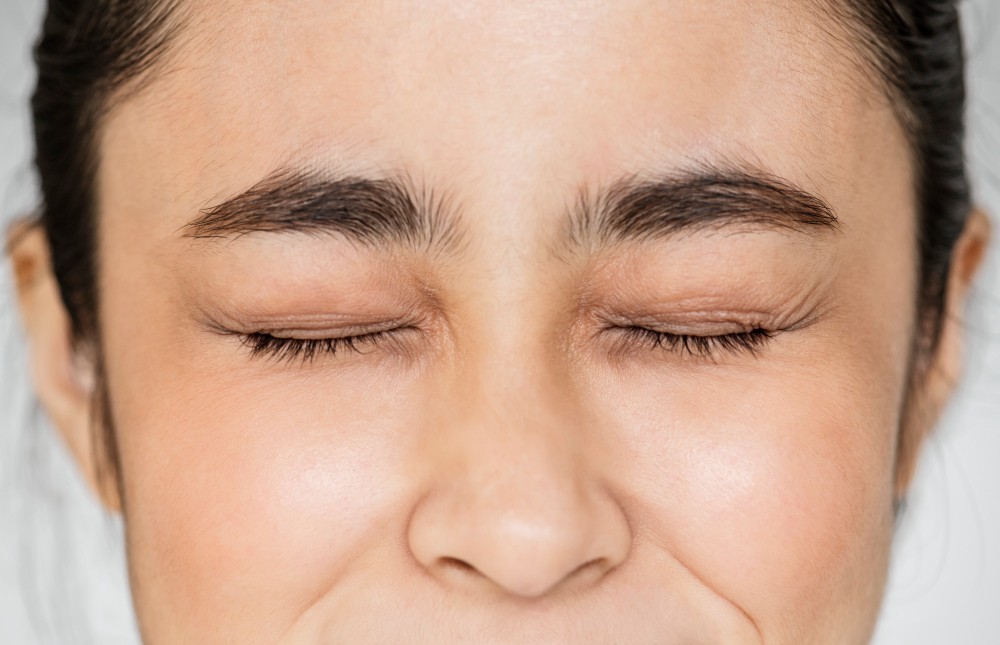You may have noticed small blisters forming on your fingers or toes, accompanied by itching or a burning sensation. This condition is known as pompholyx, or dyshidrotic eczema, a form of eczema that typically affects teens and adults, particularly women. So, how can pompholyx be treated? Let's explore the following explanation.
What is Pompholyx (Dyshidrosis)?
Pompholyx, also referred to as dyshidrotic eczema, is a chronic skin disorder that leads to the formation of small blisters, often accompanied by dry, itchy skin. These blisters most commonly develop on the fingers, hands, and feet. The condition is also known as acute palmoplantar eczema or vesiculobullous dermatitis.
While dyshidrotic eczema can affect anyone, it is most commonly found in women between the ages of 20 and 40, especially those with a personal or family history of eczema, contact dermatitis, or allergies.
Symptoms of Pompholyx (Dyshidrosis)
Pompholyx or dyshidrotic eczema symptoms can come and go over a few weeks. Symptoms include:
- Small, hard blisters on the palms, fingers, or soles of the feet
- Painful blisters
- Itchy, scaly skin on or near the blisters
- Increased sweating around the blistered areas
- As blisters heal, the surrounding skin may become dry, cracked, or scaly
Though these blisters can be extremely itchy, it's crucial to avoid scratching or attempting to pop them. Bursting the blisters can cause skin thickening or even lead to infections. If necessary, cover the affected area with a bandage and change it daily to avoid infection.
Causes of Pompholyx (Dyshidrosis)
The exact cause of pompholyx remains unknown, but experts suspect it is triggered by a combination of factors, including:
- Immune system response: Those with pompholyx may have an immune system that reacts to minor irritants or allergens, triggering inflammation and blister formation.
- Allergies: Contact with substances such as cement, nickel, cobalt, or chromium may induce blisters.
- Moisture: Wet or sweaty hands and feet can trigger dyshidrotic eczema.
Other triggers for dyshidrotic eczema may include sensitivity to:
- Metals like nickel or cobalt
- Certain ingredients in soaps, lotions, or personal care products
- Medications like birth control pills or aspirin
- Tobacco use
- Intravenous immunoglobulin (IVIG) infusions
- Stress
- Changes in weather
Treating Pompholyx (Dishydrosis)
Pompholyx treatment includes both medical and at-home remedies, such as:
- Using warm water when washing your hands
- Wearing gloves while doing household chores like washing dishes or clothes
- Applying cold compresses or soaking hands and feet in cool water to alleviate symptoms
- Regularly using moisturizers to treat dry skin
- Drying your hands and feet thoroughly after bathing or swimming
- Avoiding the urge to scratch or pop blisters
Your doctor may recommend a topical corticosteroid cream or ointment to apply directly to the affected skin. Oral antihistamines may also be prescribed to reduce itching and inflammation.
Pompholyx can occur at any time, often without an apparent cause. If you notice blisters on your hands or feet, it's essential to consult a doctor for proper treatment. You can also use the consultation feature on the Ai Care app, available for download on the App Store or Play Store.
Looking for more information about other health conditions? Click here!
- dr Nadia Opmalina
Jain, A., Jarrett, P.(2023). Dyshidrotic eczema (pompholyx). Available from: https://dermnetnz.org/topics/dyshidrotic-eczema
DiGuacinto, J., Dock, E. (2023). Dyshidrotic (Dyshidrosis) Eczema. Available from: https://www.healthline.com/health/dyshidrotic-eczema#
Cronkleton, E. (2021). Can Dyshidrotic Eczema Spread from One Person to Another?. Available from: https://www.healthline.com/health/eczema/dyshidrotic-eczema-contagious
Watson, S. (2024). Dyshidrotic Eczema. Available from: https://www.webmd.com/skin-problems-and-treatments/eczema/dyshidrotic-eczema












